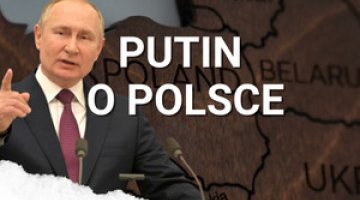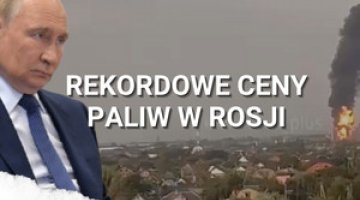Russia and the gas crisis in Europe
In recent weeks, Russia has contributed to the deepening crisis on the European natural gas market, mainly by taking the following steps: abandoning the filling of warehouses which Gazprom owns or rents in selected EU countries; its lack of interest in selling gas on European exchanges; and failing to book additional capacity in selected export pipelines. During the crisis, Russia’s gas strategy has been guided by both tactical (the rapid launch of Nord Stream 2) and strategic goals, which include revising its long-term principles of cooperation with the EU, in particular in the energy field, and implementing individual political goals in relations with selected countries outside the EU. It seems that Russia will continue this two-track policy over the coming months. On the one hand, it will continue to exert political and economic pressure to use the upcoming winter period and the continuing crisis to force concessions it expects from its European partners. On the other, we should expect Moscow to ease its stance tactically, primarily in order to neutralise calls in the EU and the US to punish it for using gas supplies for political purposes (for example, the EU could threaten to launch new anti-trust proceedings, or Washington could call for new sanctions against Russia).
Russian complicity, and a convenient alibi
Although the causes of the current gas crisis in Europe are complex (see Rising gas prices are a pressing problem for the EU), there is no doubt that Russia’s recent actions are among the most important of them. Although the price situation is presently very good for gas producers, Gazprom has not decided to increase its gas supplies to its European customers; its refusal to sell additional volumes of gas via the European exchanges or the electronic trading platform in St. Petersburg is proof of this. In the latter case, the Russian company has withdrawn from the 2022 auctions. Contrary to the practices applied in the spring and summer periods of previous years, Gazprom has significantly reduced the volumes of gas pumped to both its own and its rented gas storage facilities in Europe (mainly those located in Austria, the Netherlands and Germany). It has also regularly failed to book any long-term capacity in the pipelines used to export gas to Europe. In July this year, Gazprom did not purchase the capacity of the Yamal-Europe gas pipeline which was available from 1 October 2021 to 30 September 2022; instead it chose to make a series of monthly reservations, which it maintained at levels much lower than those offered at auctions (for example, the reservation in October this year amounted to about a third of the pipeline’s November capacity). On 2 November, Gazprom withdrew from booking any capacity in the Yamal pipeline as part of the auctions for the first three quarters of 2022. The Russian company is also no longer ordering any of the additional capacity offered by the operator of the Ukrainian gas transmission system.
At the same time, while Moscow has been defending itself against accusations of using its gas supplies as an instrument of foreign policy, it has also made efforts to ensure an appropriate alibi for itself. First, both the Kremlin and Gazprom have argued that Russia’s priority at the beginning of the new heating season is to fill its own gas storages. According to data published by Gazprom, gas withdrawn in the previous season amounted to around 60 bcm, one of the highest results in history. The planned injection level for this year (72.6 bcm) is similar to those of previous heating seasons (for example, it was 72.3 bcm at the beginning of the 2020/1 season). Secondly, the Kremlin and Gazprom claim that Russia is meeting all its obligations under its long-term contracts with its European partners in full, which is confirmed by the absence of complaints from European importers of Russian gas.
The tactical goal and the strategic goals
At the tactical level, Russia’s main aim is to exploit the crisis situation on the European gas market to force the rapid launch of Nord Stream 2. This was initially demonstrated in statements by Russian government representatives over the last few months, in particular by Deputy Prime Minister Aleksandr Novak and Kremlin spokesman Dmitri Peskov. In recent weeks, President Vladimir Putin has mentioned the possibility of increasing Russian gas supplies to Europe after NS2 is launched: on 13 October during a panel discussion during the Energy Week in Moscow, and on 21 October during a meeting organised as part of the Valdai Club.
There are many indications that the Kremlin sees the current gas crisis in Europe as a convenient opportunity to escalate its demands as part of the strategic goals of Russia’s energy policy.
First, Moscow is trying to use the current situation as a pretext to revise the rules for gas cooperation between Russia and European countries, in particular those that are members of the EU. This is primarily evidenced by Putin’s statements highlighting mistakes in the EU’s energy policy as one of the main causes of the crisis, in particular the regulatory changes it introduced which abandoned long-term contracts and moved towards investing in renewable energy sources. Moscow probably hopes that the current situation will weaken the trust of many member states in the EU’s regulatory solutions, and that on issues which are strategically important for Russia, such as the rules for operating NS2, it will incline them to interpret these provisions for Moscow favourably, or even rule them out completely. In addition, Russia also expects the uncertainty linked to the shifts in prices on the spot markets to encourage importers to sign new, bilateral contracts with it, which the Kremlin can present as being beneficial to both exporters and importers.
Secondly, Russia perceives the energy crisis as an opportunity to strengthen its position in possible negotiations with the EU regarding the new regulatory solutions which are planned as part of the climate policy and the implementation of the European Green Deal concept. There are many indications that Moscow will try to offer a willingness to show greater flexibility in responding to crisis situations on the European market in exchange for the EU easing or ruling out (in relation to Russia) the measures it planned to combat greenhouse gas emissions, in particular the plans to introduce the so-called carbon border tax (CBAM, Carbon Border Adjustment Mechanism). This is evidenced by President Putin’s numerous statements in recent weeks, insisting that Russia is ready to take steps to stabilise the situation on the energy markets
Third, Moscow is trying to use the gas crisis to its pursue political goals vis-à-vis those European countries which are heavily dependent on gas supplies from Russia while at the same time trying to strengthen their ties with the EU. In the case of Moldova, which is linked to Brussels by an Association Agreement and is a member of the Energy Community, Gazprom has been dragging out negotiations over a new gas contract for several weeks. However, on 30 October the parties did finally reach an agreement to extend the contract by five years, mainly thanks to political concessions from the government in Chisinau. In the protocol adopted during the negotiations, they undertook not to restructure MoldovaGaz (63.4% of whose shares belong to Gazprom), i.e. to effectively abandon the implementation of the EU’s unbundling principle, until the gas debt to the Russians is settled (which Gazprom estimates at US$700–720 million). In turn, during the ongoing Russian-Serbian negotiations, Gazprom (according to the Serbian president) allegedly proposed a price formula that Belgrade saw as unfavourable (linking 30% of the price with that of crude oil, and 70% with the gas exchange price), which would mean the price of gas supplies from Russia would rise to around US$790 per 1000 m³, more than three times the current level. It is very likely that Moscow’s tough starting position is aimed at forcing Belgrade to make some political concessions regarding Serbia’s cooperation with the EU.
Russia’s further actions and calculations
There are many indications that in the coming months Russia will continue its two-track strategy: actions aimed at maintaining economic and political pressure on European recipients will be intertwined with tactical concessions to them. This conclusion is prompted by the steps Russia has taken in recent months with regard to its partners both inside and outside the EU. President Putin’s announcement concerning the filling of Gazprom’s gas storage facilities in Europe led to a fall in gas prices on European gas exchanges. Moscow most likely hopes that this will neutralise the accusations that it has been using gas as a political weapon against European consumers, and remove the risk of the EU anti-trust investigation. At the same time, it is not clear how much Gazprom will raise the gas levels in its gas storages located in EU member states. Besides, for the time being, there are no indications that it is interested in increasing gas supplies to Europe by selling its additional volumes on European exchanges. As for NS2, Moscow’s principal demand is that it be launched as soon as possible. However, at the same time it is sending political signals that it is ready to maintain gas transit through Ukraine; the hope is that this will neutralise the calls for the US to impose new sanctions on Russia which have been made in some Western countries.
On the one hand, Moscow’s strategy of using the current energy crisis to achieve its political and economic goals is quite risky. The accusations that Russia is using gas supplies as a political weapon which have been made in political and expert discussions, are harming its image, which may motivate some importers to adjust their gas policies and take more decisive steps to diversify their sources of supplies. The current situation may also lead to selected regulatory mechanisms being strengthened at the EU level, in particular those regarding energy security; this could, for example, include a demand to create EU gas reserves. Finally, Russia’s moves may induce the European Commission to launch another anti-trust investigation.
On the other hand, though, the Kremlin seems ready to take these risks, for several reasons. Firstly, Moscow is counting on its European partners adopting a pragmatic approach towards it in the face of persistently high gas prices and the threat of a more serious energy crisis in the coming winter season. It expects that the announcement of an increase in deliveries will be taken as a gesture of goodwill, which will result in accelerating the certification of NS2. Secondly, Russia is aware that any new antitrust proceedings initiated by the European Commission would take several years, and so its possible negative consequences would not have to be dealt with for some considerable time. Third, Russia is probably convinced that the appeals in some European capitals for the US to introduce new restrictions on it will not materialise. This calculation is based primarily on the case of NS2, as pressure on the project from possible US sanctions has eased under the Biden administration. Fourthly and finally, it cannot be ruled out that Moscow has been encouraged to manipulate the current gas crisis by the experience of previous such incidents in Europe in which it interfered. This is related in particular to the suspension of Russian gas supplies via Ukraine in January 2009. Although nominally this did lead to the EU strengthening its regulations concerning energy security, in the long run this did not really weaken Russia’s position on the European gas market.





